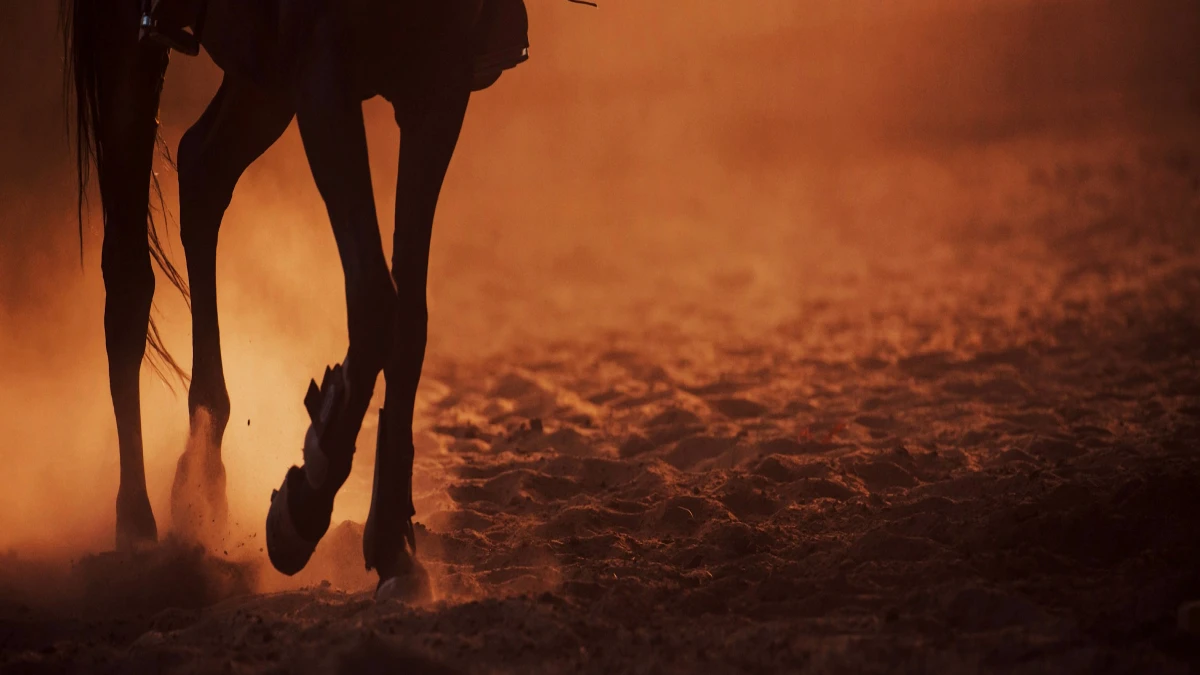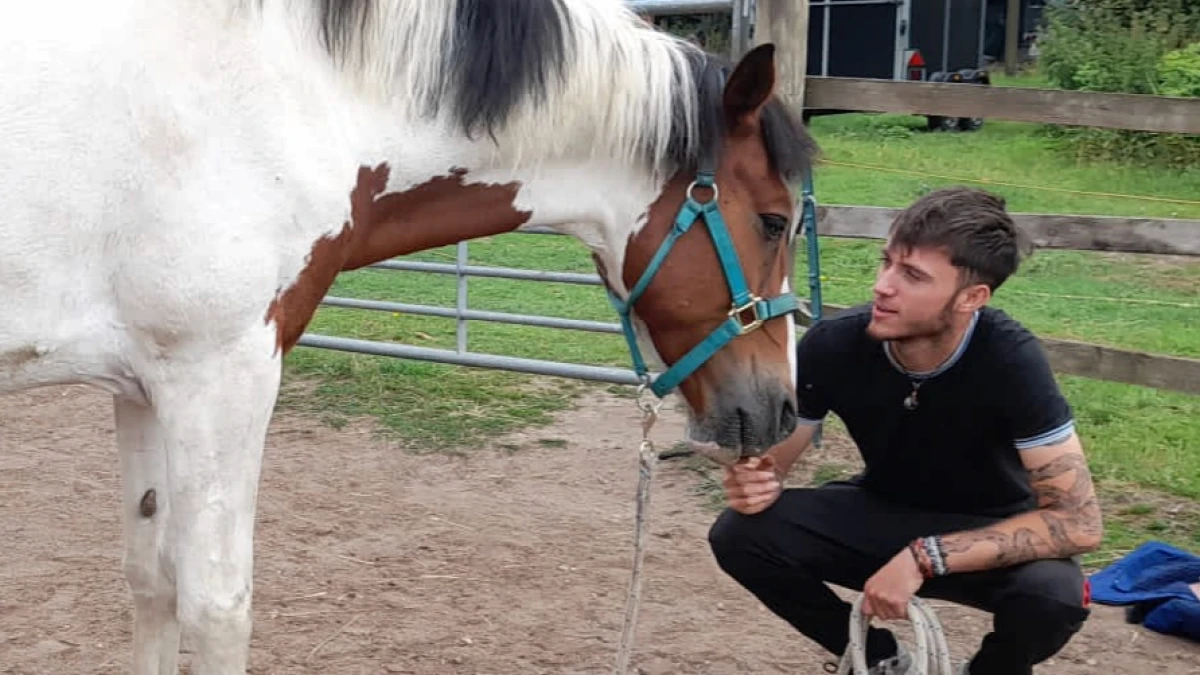Stall Walking: Causes, Prevention, and Management
Jul 22, 2023 by Jamie Finch

Stall walking is a behavioural issue that may concern many horse owners, trainers, and caretakers.
It manifests as repetitive pacing or circling within the confines of a stall or enclosure and can indicate various underlying problems.
This blog will explore the causes, consequences, prevention strategies, and management techniques associated with stall walking.
What is Stall Walking?
Stall walking, also known as box walking or weaving, refers to repetitive and compulsive behaviour horses exhibit when confined to their stalls or enclosures.
This behaviour is characterised by the horse repeatedly pacing back and forth or swaying from side to side.
Stall walkers typically display a rhythmic and predictable pattern in their movements, varying in intensity from mild to severe.
Identifying stall walking in horses is essential for early intervention and understanding the potential issues affecting their well-being.
Common signs of stall walking include:
Pacing: The horse moves back and forth along the length of the stall, often in a straight line.
Circles or Figure-Eight Patterns: Some horses may repeatedly circle the stall or trace figure-eight patterns.
Restlessness: Stall walkers may appear restless and unable to relax, even when no external stimuli trigger the behaviour.
Vocalisation: Horses may vocalise more frequently while stall walking, expressing discomfort or anxiety.
Differentiating Stall Walking from Other Behaviours
It's crucial to differentiate stall walking from normal behaviours that horses may exhibit in confinement.
While some level of movement is natural for horses, especially when stabled for extended periods, stall walking becomes concerning when it escalates into a repetitive and obsessive pattern.
Distinguishing stall walking from other behaviours helps understand the underlying issues and choose appropriate interventions.
Common behaviours that may be confused with stall walking include:
Regular Pacing: Some horses may walk around their stalls periodically, which could be a response to the environment, hunger, or anticipation of activity. This behaviour is generally not as rhythmic or excessive as stall walking.
Pawing: Pawing on the ground is a behaviour horses may display to express impatience or frustration. However, it typically involves striking the ground with a front hoof, whereas stall walking involves pacing or swaying.
Agitation During Feeding: Horses may become eager or restless during feeding, leading to movement and vocalisation. This behaviour is usually temporary and subsides once the horse has finished eating.
Understanding these distinctions can aid in accurately identifying stall walking and implementing effective measures to address the root causes.
Common Causes of Stall Walking
Stall walking can arise from various physical, psychological, or environmental factors.
It is essential to identify these causes to develop appropriate strategies for prevention and management.
Here are some common reasons why horses may exhibit stall-walking behaviour:
Boredom and Lack of Stimulation: Horses are naturally active animals needing mental and physical stimulation. When confined to stalls without sufficient opportunities for activity or interaction, they may stop walking to cope with boredom and restlessness.
Insufficient Exercise and Turnout: Regular exercise is vital for a horse's well-being, as it helps maintain their physical health and mental balance. Inadequate turnout time and limited movement can lead to excess energy buildup, which the horse may release through stall walking.
Social Isolation and Loneliness: Horses are social creatures that thrive in the company of others. Isolation or lack of companionship can result in stress and anxiety, leading to stalling walking to seek interaction.
Dietary Factors and Nutrition: Imbalances in a horse's diet or feeding schedule may contribute to stall walking. Digestive discomfort or hunger pangs could prompt the horse to engage in repetitive behaviours.
Environmental Stressors: A stressful or unfamiliar environment, loud noises, or sudden changes in routine can trigger anxiety in horses and lead to stalling walking.
Prevention Strategies
Understanding the potential harm caused by stall walking motivates us to implement preventive strategies proactively.
Here are some essential steps to help reduce the likelihood of stall walking in horses:
Proper Stable Design and Environment: Create a horse-friendly environment by designing stalls for adequate space, good ventilation, and natural light. Provide clean and comfortable bedding to ensure the horse's physical comfort.
Enrichment and Mental Stimulation: Offer a variety of safe toys and enrichment devices in the stall to keep the horse mentally engaged and entertained, reducing the risk of boredom-related stall walking.
Regular Exercise and Turnout: Ensure horses receive sufficient daily exercise and turnout time in a suitable paddock or pasture. Regular movement and social interaction with other horses can help prevent the development of stall-walking behaviour.
Social Interaction and Companionship: Whenever possible, house horses in groups to provide companionship and reduce feelings of isolation. Horses are social animals, and interaction with herd mates can positively impact their mental well-being.
Balanced Nutrition and Feeding Practices: Please consult an equine nutritionist to ensure the horse's diet is balanced and meets its nutritional requirements. Regular feeding times and access to forage can help maintain a healthy digestive system and prevent stall walking due to hunger or discomfort.
Conclusion
Stall walking is a complex behavioural issue that can significantly affect a horse's physical health, mental well-being, and overall quality of life.
By understanding the root causes, recognising early signs, and implementing proactive prevention and management strategies, you can support our equine companions in leading healthier, happier lives.
As a horse owner, you must provide an environment that caters to the horse's natural needs and behaviours, fostering a solid and positive human-horse bond and creating a world where stall walking is rare, and our horses thrive in harmony and contentment.
Explore More Topics
10 Essential Groundwork Exercises to Improve Equine Agility
This blog post, "10 Essential Groundwork Exercises to Improve Equine Agility," provides a comprehensive guide for horse owners looking to enhance their horse's agility, coordination, and responsiveness through progressive groundwork. Each exercise includes step-by-step instructions, explains why the exercise is important for building trust, focus, and physical conditioning, and details how these skills translate into improved performance in agility courses and other equestrian pursuits.
Oct 28, 2024
Top Tips for First-Time Horse Owners: How Equine Insurance Can Give You Peace of Mind
Equine insurance is a crucial safety net for horse owners, providing financial protection against unexpected costs related to veterinary care, accidents, injuries, and liability claims. Whether you're a first-time owner or an experienced equestrian, insuring your horse offers peace of mind by covering expensive vet bills, public liability issues, theft, and even death.
Oct 23, 2024
The Importance of Groundwork: Building Trust and Communication with Your Horse
This article explores the importance of groundwork in building trust and communication between horse and rider. It covers the basics of groundwork, explains how it strengthens the horse’s confidence and respect, and offers key exercises such as leading, desensitisation, and lunging. The article also highlights the role of body language and how groundwork prepares horses for ridden work, improving safety, focus, and obedience.
Sep 10, 2024







